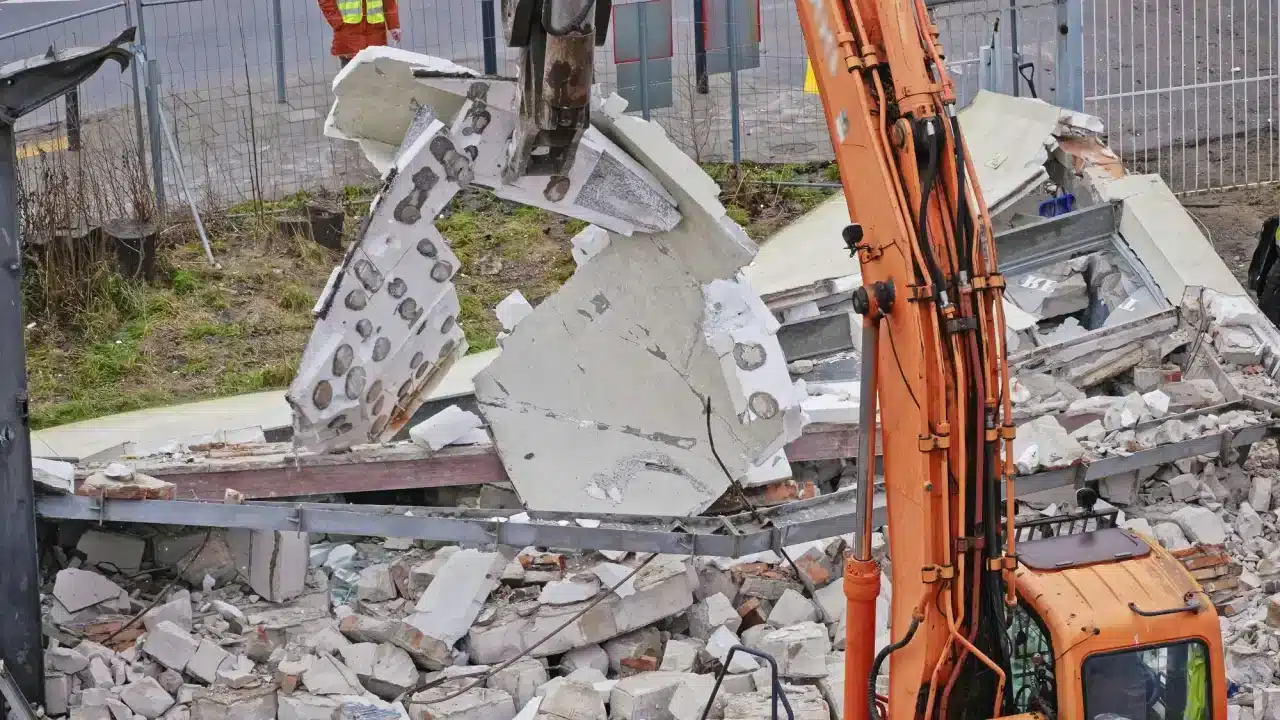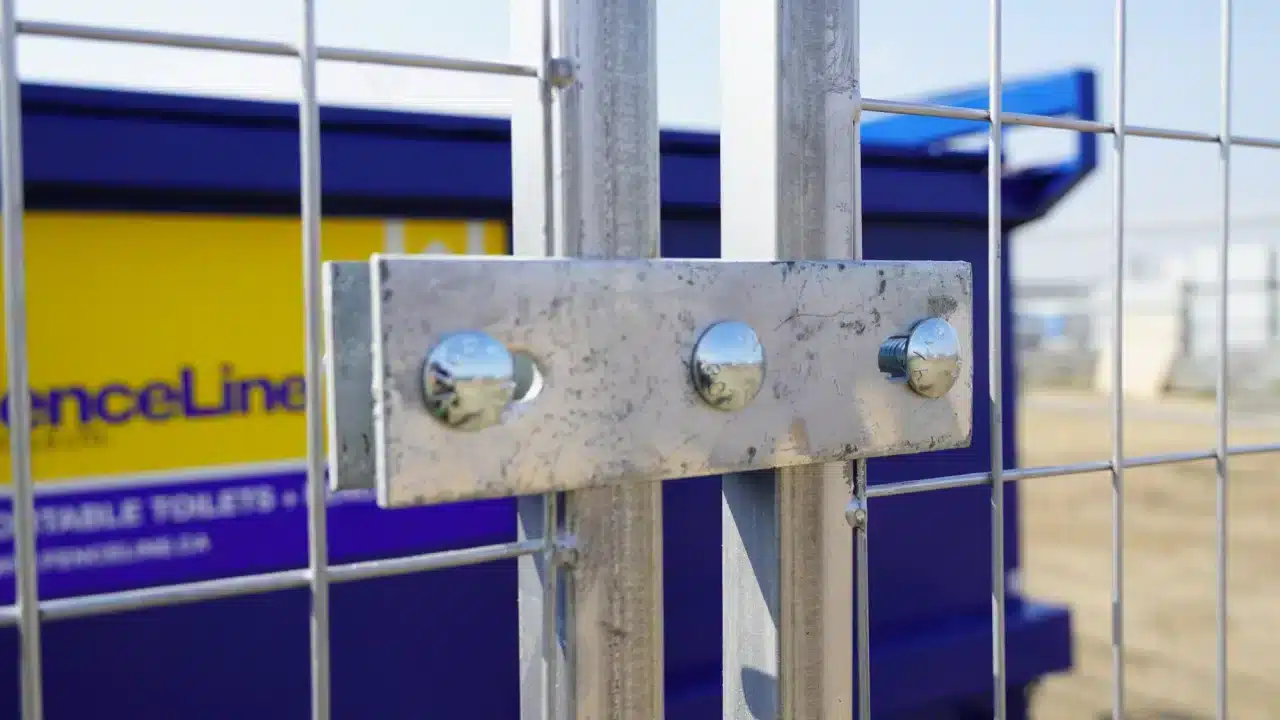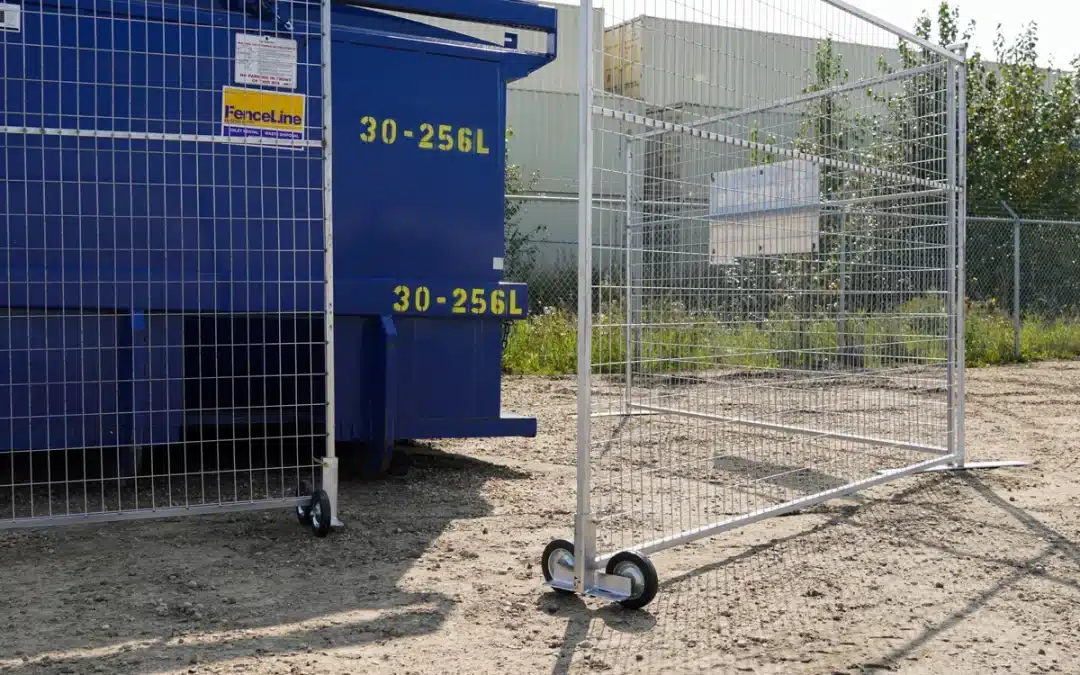Asbestos waste remains a problem in Alberta. While newer buildings constructed after the 1980s were mostly built with safer materials, many buildings from the 1950s to the 1970s still used asbestos to insulate walls and pipes.
Asbestos waste continues to pose health risks when its fibres are released into the air and inhaled by humans. That’s why Alberta has an Asbestos Abatement Manual and carefully regulates its disposal.
It’s an especially important topic for contractors working on demolition jobs or anybody doing renovations on older buildings and homes.
What Is Asbestos?
Asbestos is a “group of naturally occurring minerals that was widely used to insulate buildings, piping and structures from the 1950s to the mid 1970s due to its non-combustibility and flame-retardant properties” according to the province of Alberta’s Acceptable Industry Practices for the Disposal of Asbestos Waste.
Where Is Asbestos Found?
While asbestos is no longer widely used commercially, it can still be present in buildings constructed before the 1980s, often found wrapped around older hot water pipes, boilers, or heating ducts. It can also be found in cement, flooring, and ceiling materials.
That means asbestos waste is still a danger to people working on older buildings, and it presents serious health risks. As HealthLink BC explains, matted asbestos fibres can crumble and deteriorate and, when inhaled, can cause scarring of the lungs, lung cancer, and mesothelioma, a rare form of cancer of the lining of the body.
When Is Asbestos Dangerous?
The presence of asbestos in a home or building is not inherently dangerous unless it has crumbled, but it poses risks on construction, demolition, and renovation sites. Asbestos becomes a problem when it is disturbed in a friable form, meaning it easily crumbles under hand pressure. The easier asbestos crumbles, the more likely it is that it will release dangerous fibres into the air that can be inhaled.
That’s often the case with asbestos in older buildings set to be demolished or renovated. The removal of asbestos is always a serious matter, as it’s crucial that it not deteriorate and be allowed to float around in the air, waiting to be inhaled.
The Alberta Asbestos Abatement Manual goes into detail about the occupational health and safety code requirements on asbestos, and they include:
- Employers must ensure that all workers who work with asbestos receive the necessary training to perform their work safely.
- All workers must receive asbestos training from a government-approved agency before handling asbestos in a restricted area.
- All employers responsible for removing asbestos or demolishing or renovating a building containing asbestos must provide Alberta OHS with 72 hours’ notice before starting work that may release asbestos fibres.
How to Dispose of Asbestos

Working in a building with asbestos isn’t the only concern here. Disposing of asbestos waste is also highly regulated in Alberta, and it must be done with the utmost caution and care.
Calgary
In Calgary, it’s recommended that people hire a private company specializing in asbestos removal. Alternatively, asbestos can be dropped off at the industrial Shepard Landfill for safe disposal between 8:30 a.m. and 1:30 p.m., Monday to Friday.
- All asbestos waste must be double-bagged with polyethylene sheets.
- The asbestos waste material must be wetted prior to being bagged.
- All bags containing asbestos waste must be double-wrapped and sealed with duct tape or similar products to prevent the material from being released at the landfill.
- For commercial haulers and businesses, a permit and appointment are required for all asbestos disposals. The Industrial Waste Permit Application Form can be found here.
Edmonton
In Edmonton, the disposal of asbestos waste must be handled by someone with the proper training. Hiring a professional company with expertise and experience in handling asbestos waste is the safest way to dispose of it, regardless of the location of your project in Alberta.
The Safest & Easiest Way to Dispose of Asbestos
The reality is that more often than not, it’s safer and easier to hire a company that specializes in asbestos waste removal and asbestos abatement.
FenceLine’s Asbestos Waste Program will dispose of any asbestos-containing materials in accordance with Alberta regulations, and the program includes bin rentals, landfill coordination, and transportation.
The lidded bins are available in 30 cubic yards and 40 cubic yards, with liners available upon request. FenceLine’s program meets all OHS and Alberta Environment & Parks requirements, providing manifest tracking and disposal certificates.
The program is best for:
- Abatement and remediation projects
- Demolitions involving legacy buildings constructed between the 1950s and 1970s
- Contractors requiring certified asbestos disposal
- Residential or commercial renovations where asbestos-containing materials are present
Dispose of Asbestos Waste Safely with FenceLine

The disposal of asbestos waste is a serious matter that requires careful handling. The dangers to workers and to the public at large mean that working with a professional company that has experience handling asbestos waste is the best option.
FenceLine Rentals Ltd.’s Asbestos Waste Program includes everything you need to store and remove asbestos waste while minimizing the risk to everyone. For more information on how we can help, call us at (782) 825-5737 or contact us online today.
FAQ
How can I identify if there is asbestos in my building?
The short answer is you can’t. As Alberta Health Services recommends, the best way to identify asbestos in your home is to hire an environmental consultant to assess your property and then have qualified professionals remove it. There are many companies offering asbestos testing across Alberta.
How much does it cost to dispose of asbestos in the City of Calgary?
Asbestos waste can only be dropped off at the Shepard landfill and is subject to the city’s landfill rate of $200/tonne for both commercial companies and private citizens who decide to get rid of their asbestos waste themselves. It’s recommended that professionals be hired to dispose of asbestos waste.

